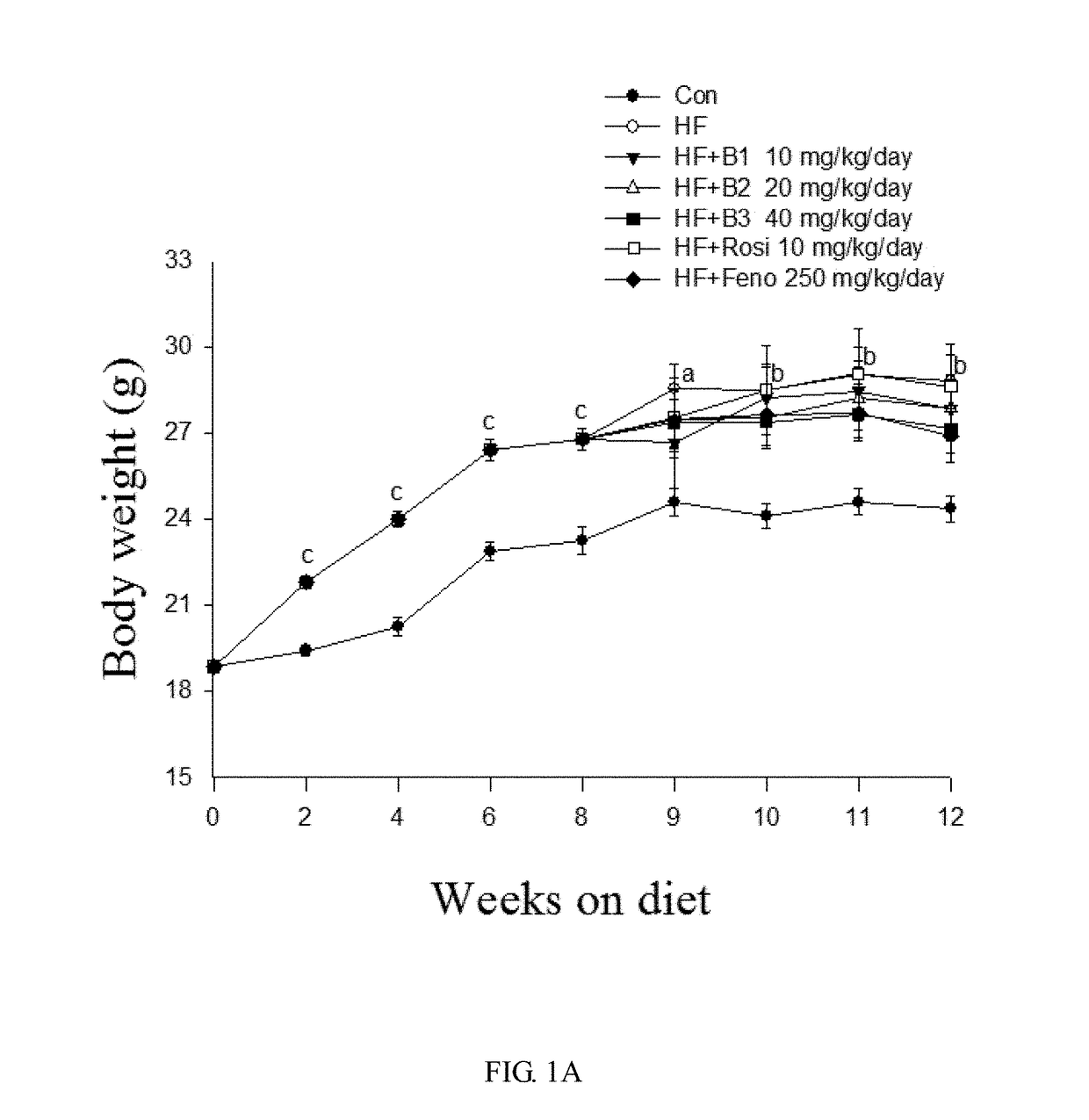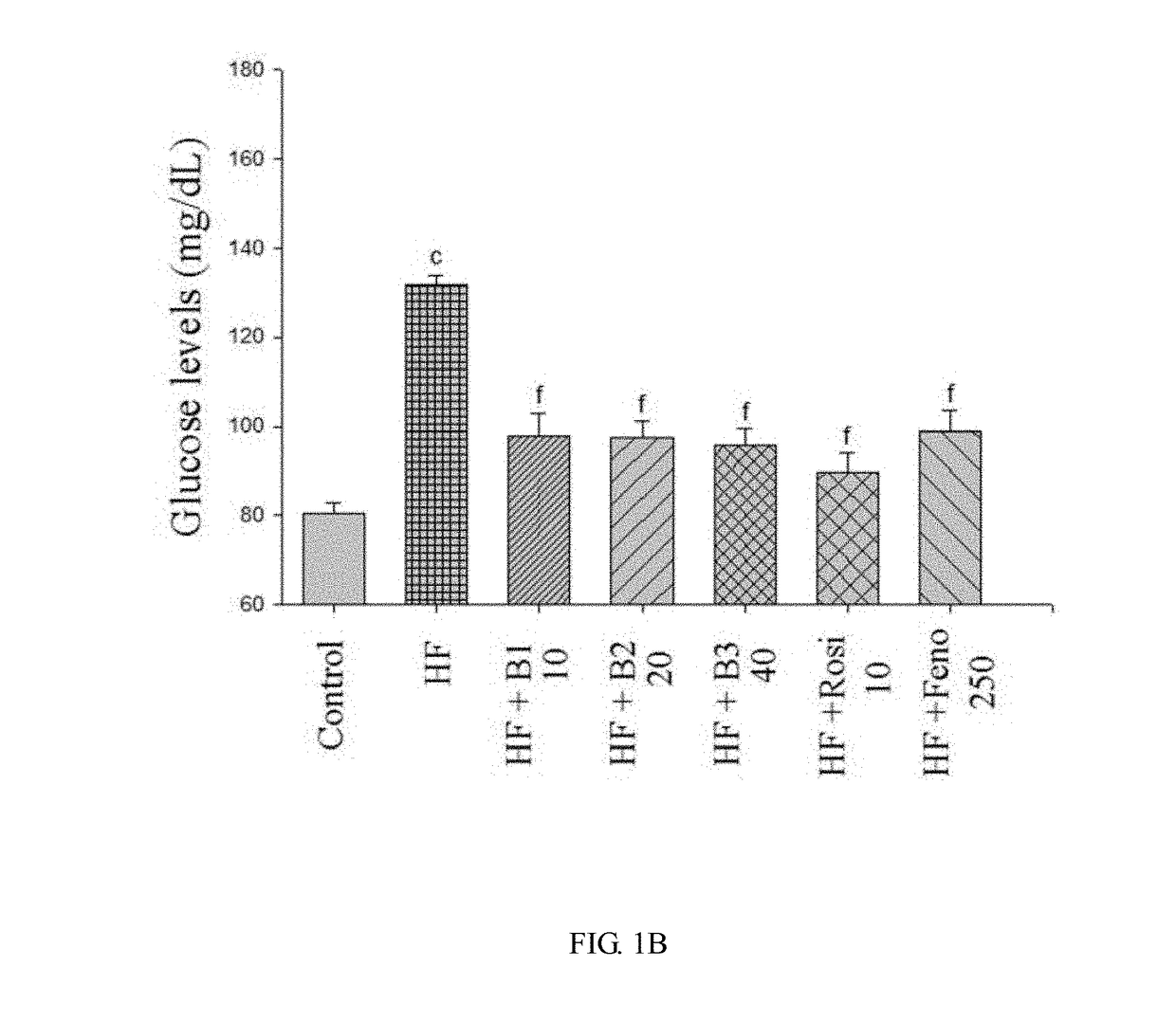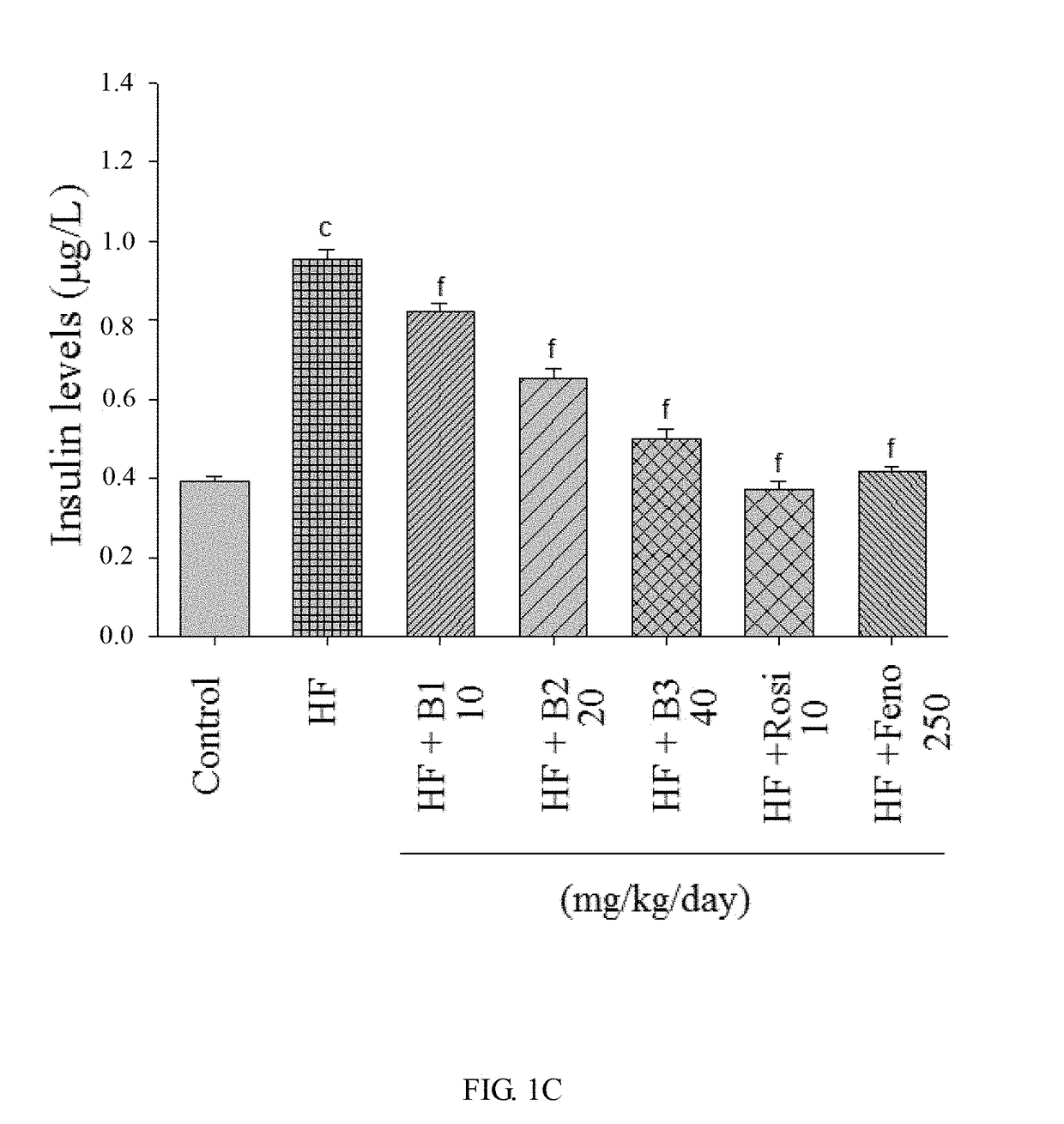Method and composition for treatment or prevention of type 2 diabetes and hyperlipidemia
a type 2 diabetes and hyperlipidemia technology, applied in the field of type 2 diabetes and hyperlipidemia treatment or prevention, can solve the problems of increasing the blood level of adiponectin, and achieve the effects of reducing the hepatic level of total lipid and triacylglycerin, and reducing the weight of visceral fa
- Summary
- Abstract
- Description
- Claims
- Application Information
AI Technical Summary
Benefits of technology
Problems solved by technology
Method used
Image
Examples
example 1
1.1 Reductions in Weights of Adipose Tissue
[0052]White adipose weight of mice for the HF group and the BB-treated HFD groups was examined to verify the visceral fat weight gain-reducing effect of the compound of formula I. As shown in FIG. 1A and TABLE 3, the mean weights of each group at the beginning are similar (18.86±0.12 g). After 8 weeks, the HFD group was treated with vehicle, rosiglitazone (Rosi), fenofibrate (Feno), or various amounts of the compound of formula I as previously described and fed on HFD for additional 4 weeks. After 12 weeks, mice on HFD all exhibited increased body weight and body weight gain compared with the CON group. In FIG. 1A, all values are means±S. E. (n=9); the alphabet letters a, b, and c represent respectively p<0.05, p<0.01, and p<0.001 compared with the CON group. No significant difference was observed in body weight when a comparison was made between the HF group and either one of the HF+B1, HF+B2, HF+B3, HF+Rosi, and HF+Feno groups. However, t...
example 2
Inhibition of Adipocyte Hypertrophy
[0058]Adipocyte hypertrophy, the pathological enlargement of adipocytes, is often found in subjects with type 2 diabetes and hyperlipidemia. To verify the therapeutic effect of the compound of formula I on adipocyte hypertrophy, morphology of the EWAT for the CON group and the BB-treated HFD groups was examined. Micrographs of the EWAT sections for each group were analyzed to determine the mean area of an epididymal adipocyte using the software ImageJ.
[0059]As shown in FIG. 2, the HF group was characterized by adipocyte hypertrophy when compared with the CON group. The mean area of an epididymal adipocyte for the HF group was 10216.4±338.4 μm2 while that for the CON group was 5347.5±408.9 μm2. However, the HF+B1, HF+B2, HF+B3, HF+Rosi, and HF+Feno groups displayed significant resistant to hypertrophy, each of which showed the mean adipocyte areas of 6882.8±102.2 μm2, 6475.5±102.6 μm2, 6192.7±100.7 μm2, 5886.4+58.7 μm2, and 6982.3±309.7 μm2, respect...
example 3
Decrease in Hepatocellular Ballooning
[0060]Hepatocellular ballooning, which is resulted from hepatocyte death and accumulated glycan in the cell, is usually observed in type 2 diabetes- and hyperlipidemia-related fatty liver. To further validate the therapeutic effect of the compound of formula I on hepatocellular ballooning, morphology of the liver tissue for the CON group and the BB-treated HFD groups was examined.
[0061]As shown in FIG. 3, when compared with the CON group, the liver of the HF group displayed significant ballooning degeneration of hepatocytes, with the nucleolus being squeezed into the side, which is the so-called ballooning (indicated by white arrow in FIG. 3). Based on previous report, the designation of histological hepatocellular ballooning findings include grade 0 for absence of degeneration, grade 1 for degeneration in a few cells, and grade 3 for degeneration in many cells. While HFD caused ballooning (mean score=1.9±0.2), the appearance of ballooning was le...
PUM
 Login to View More
Login to View More Abstract
Description
Claims
Application Information
 Login to View More
Login to View More - R&D
- Intellectual Property
- Life Sciences
- Materials
- Tech Scout
- Unparalleled Data Quality
- Higher Quality Content
- 60% Fewer Hallucinations
Browse by: Latest US Patents, China's latest patents, Technical Efficacy Thesaurus, Application Domain, Technology Topic, Popular Technical Reports.
© 2025 PatSnap. All rights reserved.Legal|Privacy policy|Modern Slavery Act Transparency Statement|Sitemap|About US| Contact US: help@patsnap.com



